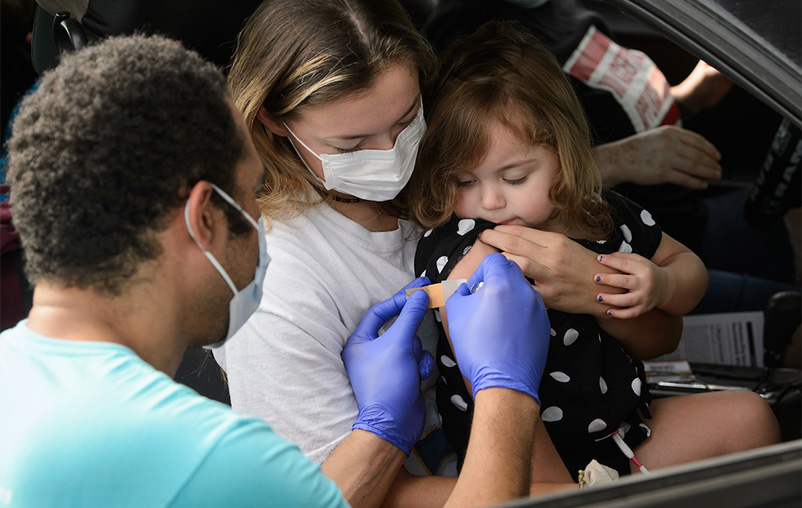Kids will be attending school remotely for the rest of the year and we now have to wear masks or face coverings when we’re in public or large groups. Going to restaurants, shopping and even working have changed dramatically for Americans since the outbreak of the COVID-19 pandemic as well. Though it feels like we’ve been social distancing and taking precautions forever, it now looks like this may be the new “normal” for us.
So, why is it important for us to maintain this new way of life during this pandemic? And how long will it be until life returns to normal?
What’s a pandemic?
A pandemic is a global outbreak of disease, according to the World Health Organization. A pandemic occurs when a new virus or bacteria emerges that infects and spreads between people and throughout societies easily over time. The illness spreads worldwide because there is little to no pre-existing immunity against the new virus.
Americans have not really experienced a true pandemic since H1N1 in 2009, but there have been multiple long-term disease outbreaks throughout history that have caused significant disruptions to everyday life.
The five stages of a pandemic
The World Health Organization classifies pandemics into five stages:
Phase 1: Investigation - A new type of virus is identified- either emerging in animals or humans- that shows possible harmful implications for people
Phase 2: Recognition - Increased cases of the virus are seen and identified throughout the population. There is also an increased risk of the virus being transmitted from person-to-person.
Phase 3: Initiation - The virus has caused sporadic cases or small clusters of disease in populations of people and has now reached the point of becoming a sustained transmission.
Phase 4: Acceleration - The virus infects susceptible people and public health officials begin to take measures to protect the population through school closures, social distancing, vaccines, etc.
Phase 5: Deceleration - This phase is marked by consistent decreases of cases throughout the world.
Phase 6: Preparation - Health officials and governments continue to monitor the virus and look for ways to prevent another outbreak including developing vaccines and other medicines.
Right now, we are in between pandemic phases 5 and 6. However, once the peak passes, we are not in the clear. Instead, we’re in a waiting game. This is why it’s important for us to maintain protective efforts, such as practicing social distancing techniques, and to prepare for a possible second wave of infections as people begin to travel, commute, and move around more freely.
Pandemic waves may be separated by months. This is the beginning of a long journey for everyone worldwide. Patience, understanding and kindness will be critical as we all struggle with this drastic change to how we interact with each other.
Life after the COVID-19 pandemicOne of the more frustrating aspects of a pandemic is the unknown. At first, we didn’t know how the COVID-19 virus worked or how it was transmitted. We didn’t know how to cure or treat it. We didn’t even know how to make a vaccine. However, the good news is that the unknowns are becoming knowns: We’re learning how this virus works. We’re finding cures and treatments and eventually, we may even find a safe and effective vaccine.
Until then, life is going to be different. Even after it is safe to begin opening up businesses, our new normal will probably include social distancing and face coverings. Schools may not open on time next fall, or they may open in a different way, with smaller classes or more distance learning.
Asia is a good example of how life may look after the pandemic. While parts of Asia have reopened post-COVID-19, restaurants are still limiting the number of people who can be seated and masks are still required, explained former KENS5 reporter Oscar Margain, who now lives in Beijing.
Though many states are beginning to reopen their businesses, there are still necessary precautions being taken. The federal government has suggested that all states implement a six-staged approach to easing social distancing.
These stages include:
- Widespread testing and surveillance - To verify who in the population has been exposed and built immunity to the virus.
- Ability to diagnose, treat and isolate the virus effectively - States must ensure that they can treat and diagnose the virus.
- Scale up healthcare and medical supplies - Ensure that states have the proper medical care available if there is another outbreak of the virus.
- Maintain appropriate physical distancing - States must keep some degree of social distancing in place even as businesses and restaurants open up again.
- Effective treatment and prevention - All social distancing restrictions can be eased as effective treatments, medicines and vaccines are developed and implemented.
- Preparedness - States must prepare for another outbreak with effective research and development into virus cures, by restocking their medical supplies and creating good medical infrastructure.
As far as if there will be another outbreak of COVID-19, there are many who think it’s very possible. No one knows for sure, but time will tell. In the meantime, we do our best to take care of each other by taking the necessary precautions, and we wait.




